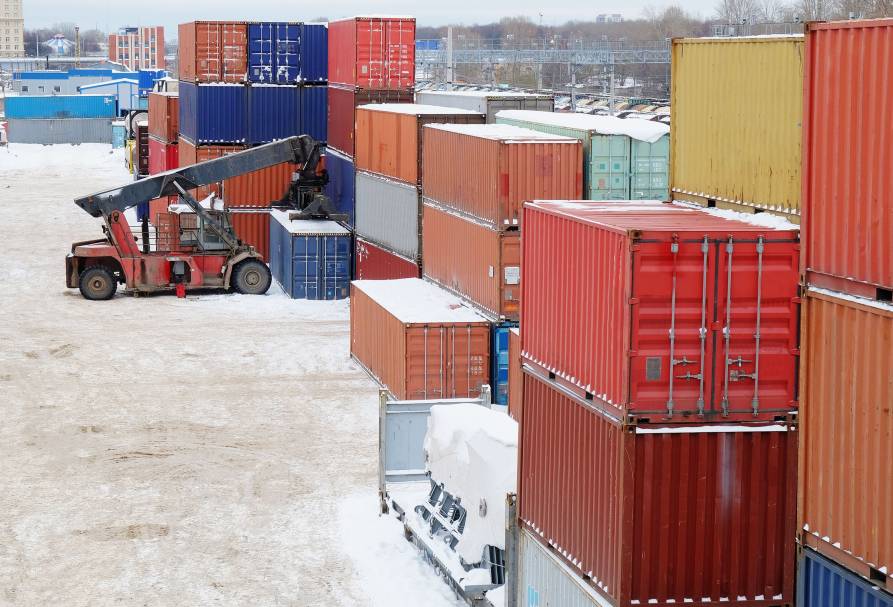What Is CBM in Shipping and How Is It Calculated?
Key takeaways
- CBM, or cubic metres, measures the freight volume and is crucial for calculating shipping costs across different transport modes.
- To calculate CBM, measure the shipment’s length, width, and height in meters and multiply them (L x W x H). For multiple identical items, multiply the total by the number of items.
- Different transport modes have specific weight equivalents for 1 CBM, impacting freight charges: air (167 kg), road (333 kg), and sea (1,000 kg).
- When shipping, knowing CBM helps choose the right container and manage costs, with adjustments for unused space in containers.
CBM (short for cubic metres or m³) is a standard unit for measuring the freight volume of domestic and international freight. The CBM measurement is a vital part of calculating freight shipping costs, but it is also used for parcel deliveries. This article will help you understand what CBM is in shipping and how to calculate it to estimate your cargo transport costs.
Create an account for free!
What does CBM mean in shipping?
As we have seen, CBM means “cubic metres”. It is a metric unit of volume that describes how much space your shipment takes. CBM is one of the most predominantly used units of measurement when shipping freight globally via air and sea, being also useful for truck and van transport. It is generally used for calculating storage space, storage charges, and freight charges.
How do I calculate the CBM of cargo?
To calculate CBM, simply measure your shipment dimensions (length, width, height) in metres and multiply them as below:
Length (m) x width (m) x height (m) = CBM (m³)
If your shipment contains multiple identical items, you can multiply the formula by the total number of items you will be shipping.
If your shipment contains multiple items of different sizes, simply repeat this formula for each item and add up the volumes.
How to calculate CBM for shipments with irregular shapes
To calculate the CBM of shipments with irregular shapes, you will need to measure the longest length, longest width and longest height because of the volume occupied by the shipment. Then use the equation:
Length (max) x width (max) x height (max) = CBM
If you are shipping a cylindrical item, you will need to know the radius to be able to calculate the CBM. The radius is the measurement from the centre of a circle to its circumference (or half the diameter). Once you have the radius, use this formula:
x height x radius² = CBM
The value of is estimated at 3.14 or 22/7.
To square the radius, multiply it by itself.
Read more about:
- How to calculate volumetric weight
- How to calculate dimensional weight
- How to pack and ship irregular items
How does CBM affect freight charges?
Carriers use CBM as a metric to calculate freight charges. 1 CBM converts to different weight values (kg) depending on the type of transport used:
- Air freight: 1 CBM = 167 kg
- Road freight: 1 CBM = 333 kg
- Sea freight: 1 CBM = 1,000 kg
The CBM measurements will be used in other important freight calculations such as:
Dimensional weight (DIM weight)
Dimensional weight is a value using CBM that is very useful to account for the size of lightweight shipments. For example, a pallet loaded with cotton and a pallet loaded with metal will take up the same volume on an aircraft, regardless of their weight difference. Does it really make sense for both shipments to be charged the same?
By calculating the DIM weight and comparing it with the gross weight (the shipment’s actual weight), carriers then determine the chargeable weight.
Chargeable weight
Chargeable weight is the final weight that will be used to calculate the transport rates, which will be whichever value is greater between the DIM weight or gross weight. Sea freight pricing is more focused on size rather than weight, while weight is a more important factor in calculating air freight costs. The DIM weight will usually play a more important role than the actual weight in this case.
Freight class
This is a theoretical figure often used in the USA for labelling oversized loads. Freight class is a calculation used by logistics providers to determine the weight of individual items.
Types of containers and their CBM

When preparing a shipment, it is important to determine the right container size for your consignment as it helps you move your cargo and manage your freight costs better. For this, you need to know how many CBM you can store in a container and calculate the CBM of your shipment accordingly.
Average CBM capacity of the most used containers
20′ and 40′ containers can be used for a broad range of cargo, which is why they are also the most common types of containers. They are usually made of steel or aluminium, and they share the same width and height. The only difference between them is in length.
40′ and 45′ High Cube containers are slightly larger, with more CBM capacity. This makes them ideal for voluminous but light cargo.
Bear in mind that it is not possible to use every piece of space in the container. There will always be some unused space, but carriers know how to maximise container capacity by fitting in as much as possible when it comes to LCL shipments. Shippers booking FCL transport should be careful to do the same.
The amount of unused space will depend on the size, packaging and positioning of the cargo inside the container. Typically, the real container capacity is a little over 80% of its maximum capacity.
More about containers:
- What is a full container load (FCL)?
- Differences between pallets and containers
- FCL vs LCL container shipping
Difference between CBM in air freight and sea freight
Air freight: The chargeable weight is usually calculated based on the dimensional factor of 6,000 cm³ per kg or 167 kg/m³.
Sea freight: The standard is to calculate the chargeable weight based on the dimensional factor of 1,000 kg/m³.
If you ship 1 CBM of cargo with a weight of 500 kg, air freight will be around 18 times more expensive than sea freight. If, however, your 1 CBM of cargo weighs only 100 kg, air freight is only 6 times more expensive than ocean freight.
While CBM and cost calculation may differ between air freight and sea freight, some other aspects, such as customs clearance charges for ocean freight and air freight should not differ.
Continue reading about:
How is the CBM calculated for parcel shipping?
The same formula works for calculating CBM for cargo shipments and for parcels. Assuming that you are shipping a regular cardboard box, measure the length, width and height and multiply each of them to get the CBM.
When shipping parcels with Eurosender, make sure your parcel fits within the allowed weight and dimension limits for your specific service.
Read also: Standard shipping dimensions
Do I need to provide the CBM when shipping with Eurosender?
Our platform instantly calculates the final price for many of our services. This means you only need to provide the dimensions and weight of your shipment, without specifying the CBM.
If your shipment has some unique specifications, you can request a customised offer. In this case, our logistics specialists will create a tailor-made offer based on your needs and calculate the final price. You will not need to calculate the CBM yourself; only provide us with the dimensions of the cargo and any special requirements you may have.
Interested in learning more about pallet and freight shipping? Check all our articles about pallet deliveries.
Create an account for free!
About the author
Marcel Nahtigal is the Head of Marketing at Eurosender, blending creativity with data-driven strategies to revolutionize logistics.






